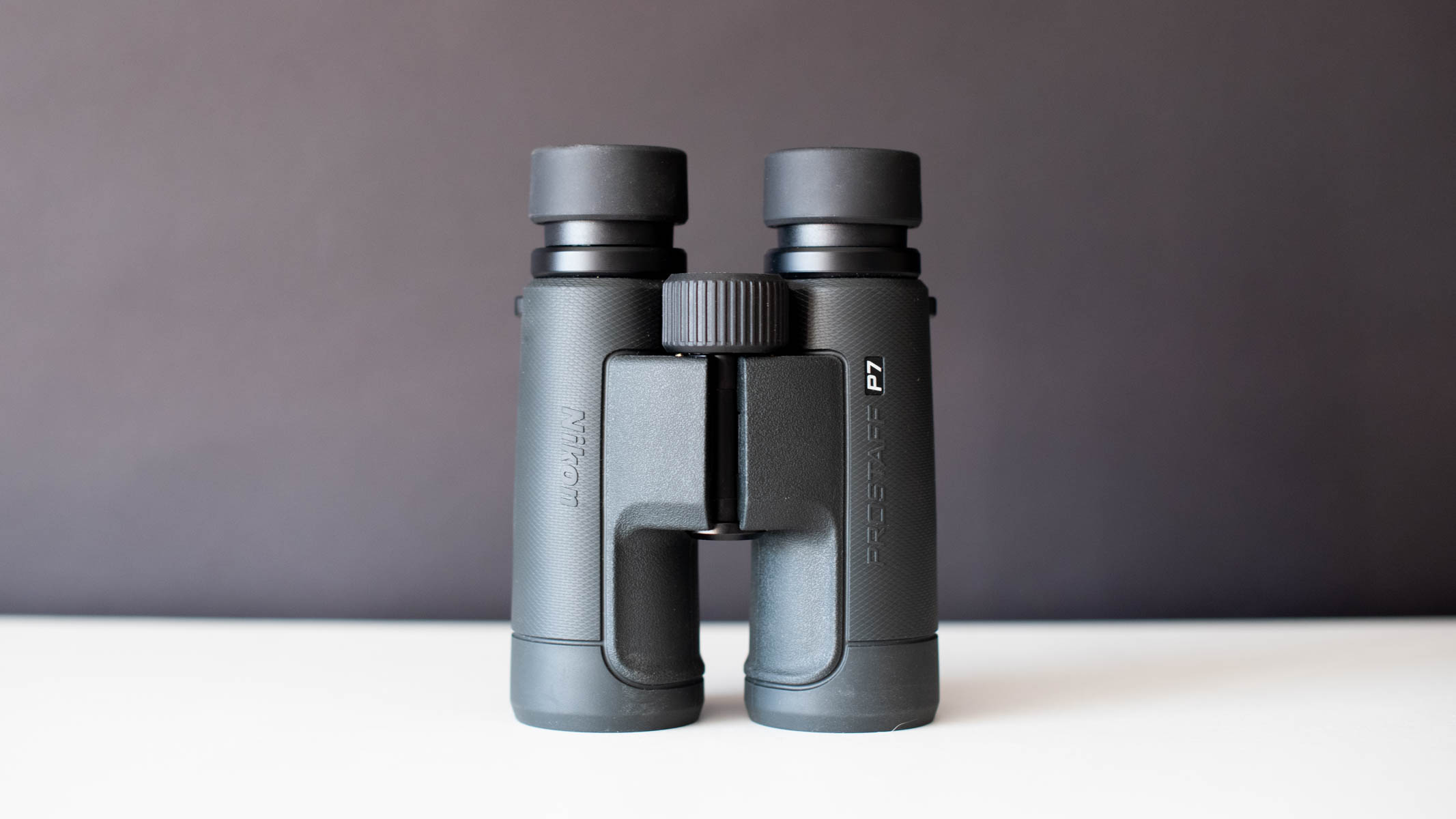Digital Camera World Verdict
The slim, lightweight roof prism design of these binoculars, coupled with sturdy construction and excellent optics make the P7s ideal for frequent observers.
Pros
- +
Great optics for the price
- +
Diopter wheel locks in place
- +
Strong, durable build
Cons
- -
Binocular case not the best
- -
Eye relief could be better
Why you can trust Digital Camera World
Available in four different model options, the Nikon Prostaff P7 10x42 binoculars also have 8x30, 10x30, and 8x42 variants. A brilliant step up from Nikon's beginner range, the P7s appeal to observers of birds, wildlife, sporting events or aviation shows that more regularly break up the binos for a closer look at their favorite subjects.
For around $200 / £250 at the time of writing, at this price point, the Prostaff P7s are amazingly constructed. They are solid in the hand, feel comfortable, and give excellent views thanks to their enhanced optical performance. Overall, I think these are some of the best binoculars you can buy in this price range and have some premium features that even Nikon usually only has on higher-end models that cost considerably more.
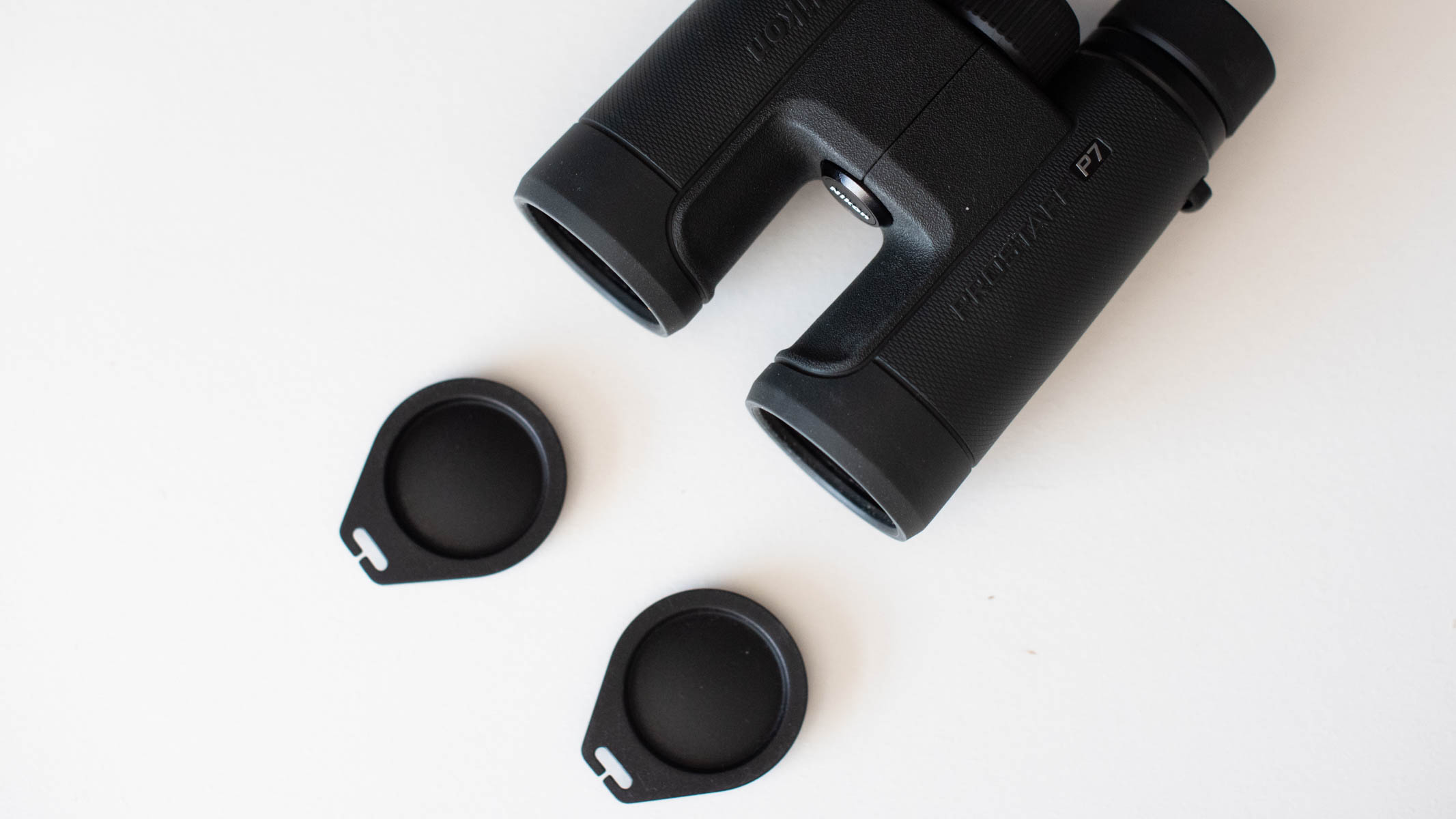
Nikon Prostaff P7 10x42 Specifications
| Design | Roof prism |
| Exit pupil | 4.2mm |
| Eye relief | 15.7mm |
| Weight | 601g |
| Dimensions | 150 x 130mm |
| Magnification | 10x and 8x |
| Objective lenses | 42mm and 30mm |
| Durability | Waterproof and fog proof |
Nikon Prostaff P7 10x42 Key Features
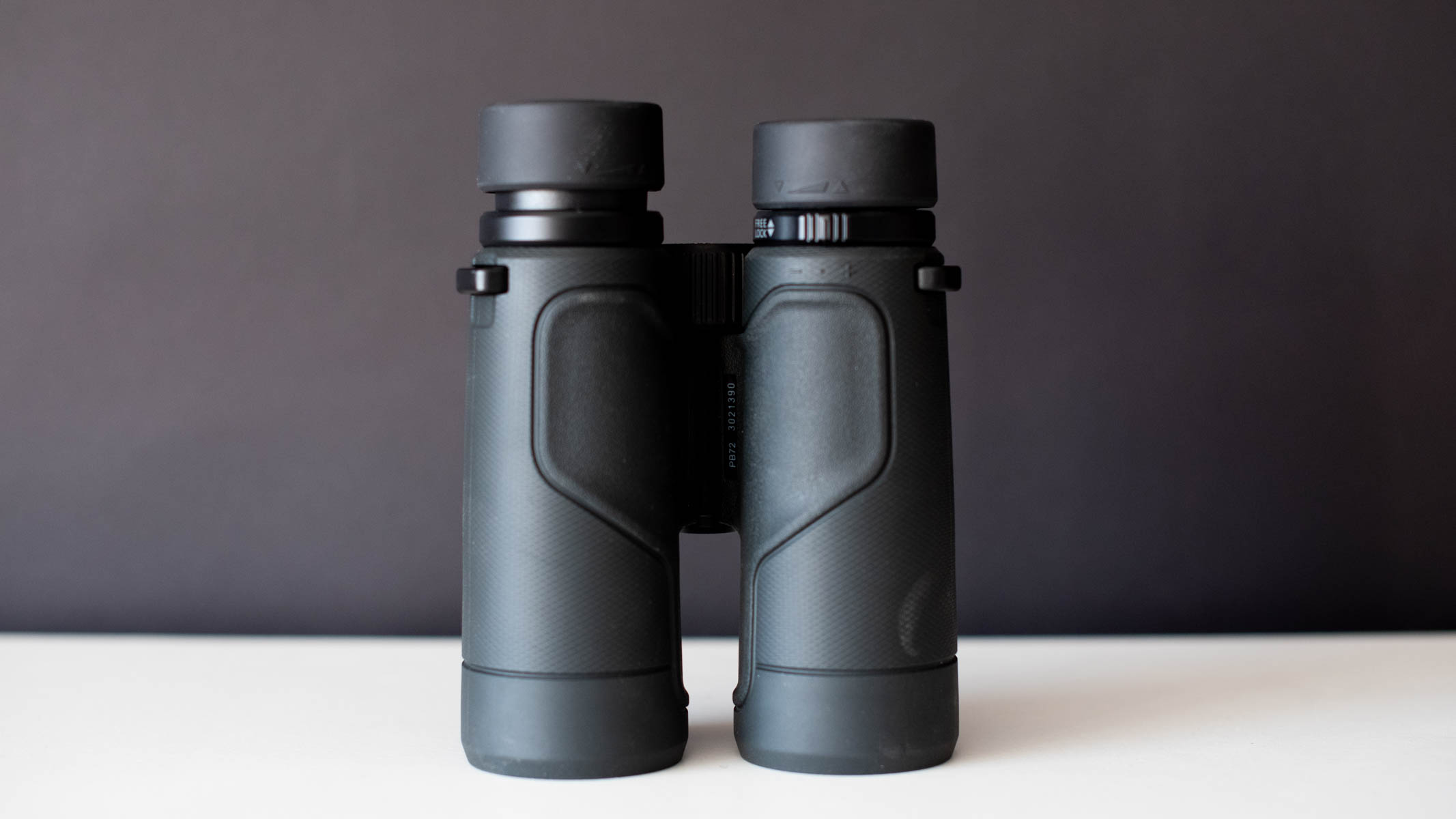
The stand-out features on the Nikon Prostaff P7s come in two parts: the locking dioptre ring and the clarity of the optical assembly.
First, the locking dioptre ring is a welcome addition to a binocular at this price point. Once focused up on a static subject with the left eyepiece and focus wheel only, I swapped across and dialed in focus using the diopter ring and right eyepiece only. We had to pull the dioptre ring collar up, towards the eyepiece, to free the movement of the dioptre ring. As soon as it was sharp, I pushed it back down, towards the objective end of the binos and it was set.
Now, no matter how many times I took it in and out of the carry pouch, knocked it with our hands, or grazed it with our jacket the dioptre held rock-solid perfect focus for our right eye the whole time. Normally, you have to pay a premium to get this kind of feature, as it's featured in Nikon's Monarch range (though not all models) which is far more costly.
I was also particularly impressed with the multi-layer coated lenses and prisms on the P7s. Views were bright, even in twilight, and gave sharp relief while observing likely due to the phase-correction coatings. An eco-friendly tick goes to Nikon for the fact that the glass for the lenses and prisms is lead- and arsenic-free.
Nikon Prostaff P3 8x42 Build & Handling
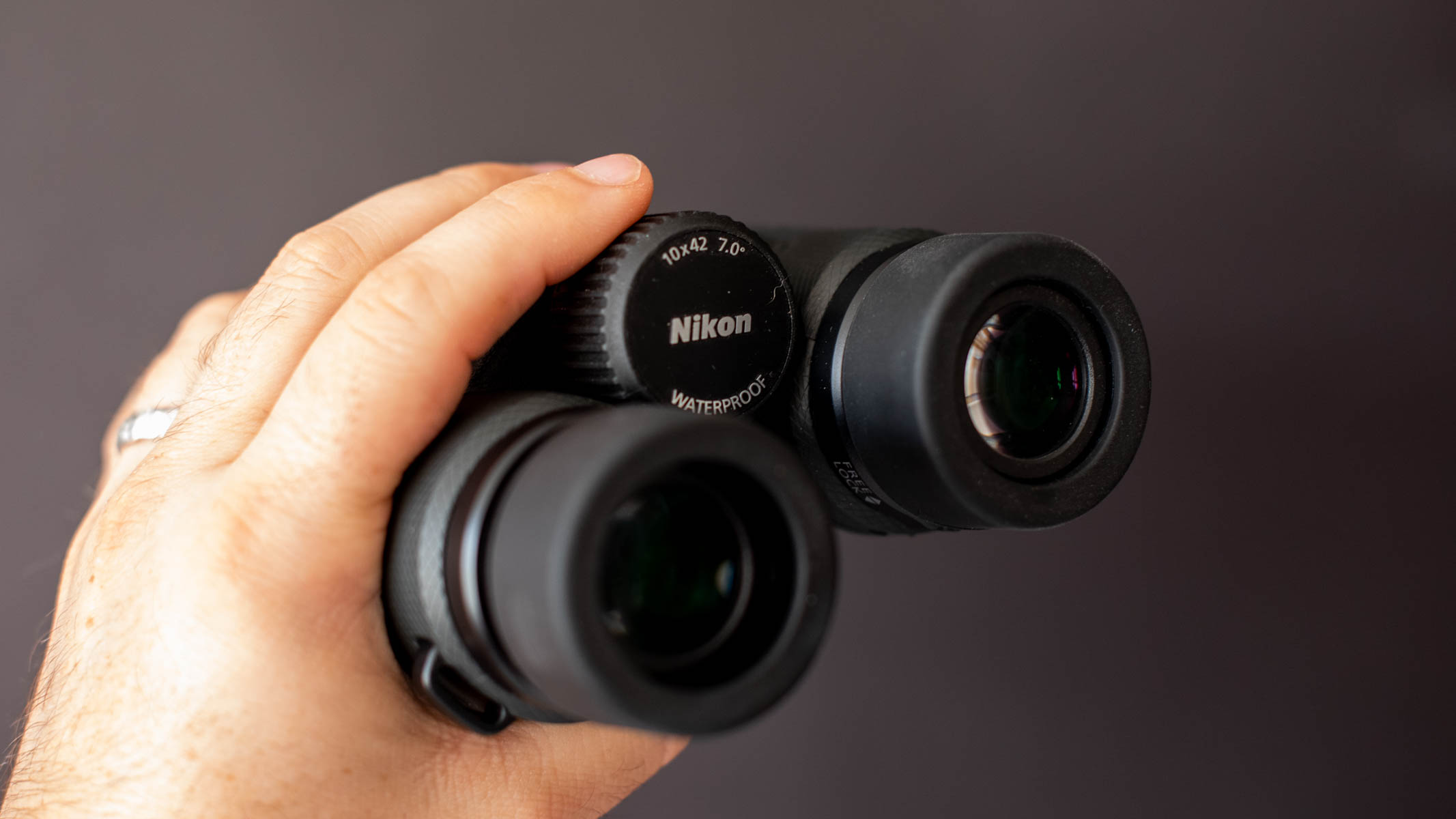
At just 601g the roof prism design of these binoculars means we were happy to take them anywhere we went. Hiking down to the local bird hide, round the neck while walking the dog or even perched against a tree to spot the constellations and asterisms that whirled above our heads at night. Some binoculars can really drag on the neck, but to the light weight and cushioned neck strap we felt these were comfortable for long periods of observing.
Nikon Prostaff P7 10x42 Performance
Views during the weeks that we had the Prostaff P7s were excellently clear, sharp and refined. We never had an issue with fogging when moving between warm and cold climes (like into and out of a car or house) because the binoculars have nitrogen-purged insides to keep them fogproof. They are also waterproof for up to one metre for 10 minutes so, despite not dropping them in a stream, pond or ditch, we feel comforted to know they should've been capable of being immersed like that.
There's even a non-stick coating on the glass elements to make them easier to keep clean when observing in inclement weather like rain, sleet or snow.
We did find that the 4.2mm exit pupil of these binoculars made for smaller than hoped-for views, but we understand that the balance of a roof prism design (typically smaller and lighter than porro prism binoculars) ultimately has to balance with price and intended market, and we think Nikon have done a good job to balance these three aspects.
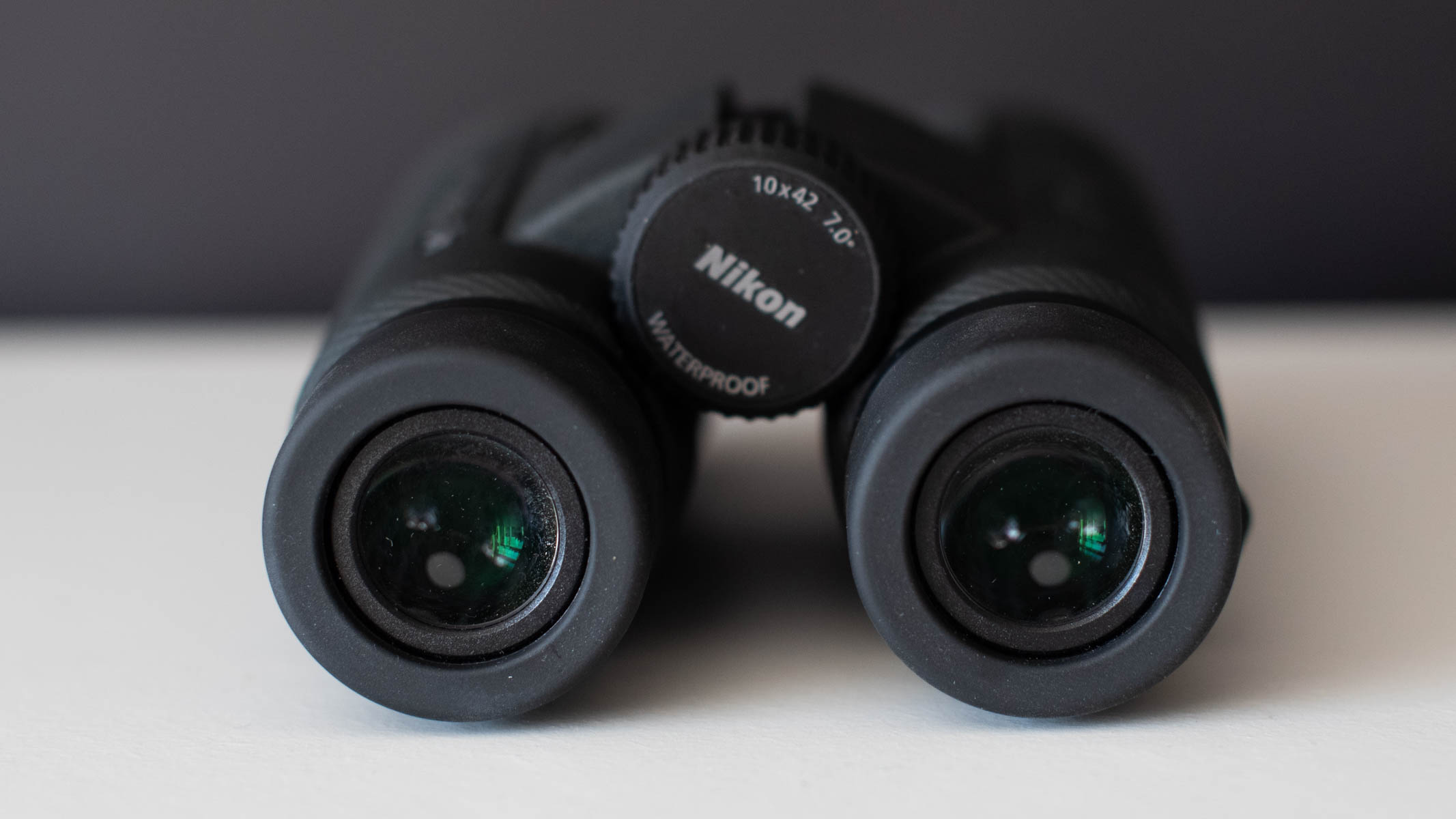
Nikon Prostaff P7 10x42 Verdict
For the money, these binoculars beat most other models that I've tried despite not having the latest and greatest innovative technology inside (a lack of ED glass and field flattening lenses for example). However, Nikon does as Nikon is in the sense that their over 100 years of optical manufacturing really plays out in these observing instruments.
Bright, clear, sharp views with minimal color fringing, plus a premium feature in the locking dioptre, waterproofing, fog proofing, and rubberized armor means these lightweight and compact binoculars are perfect for almost any occasion.
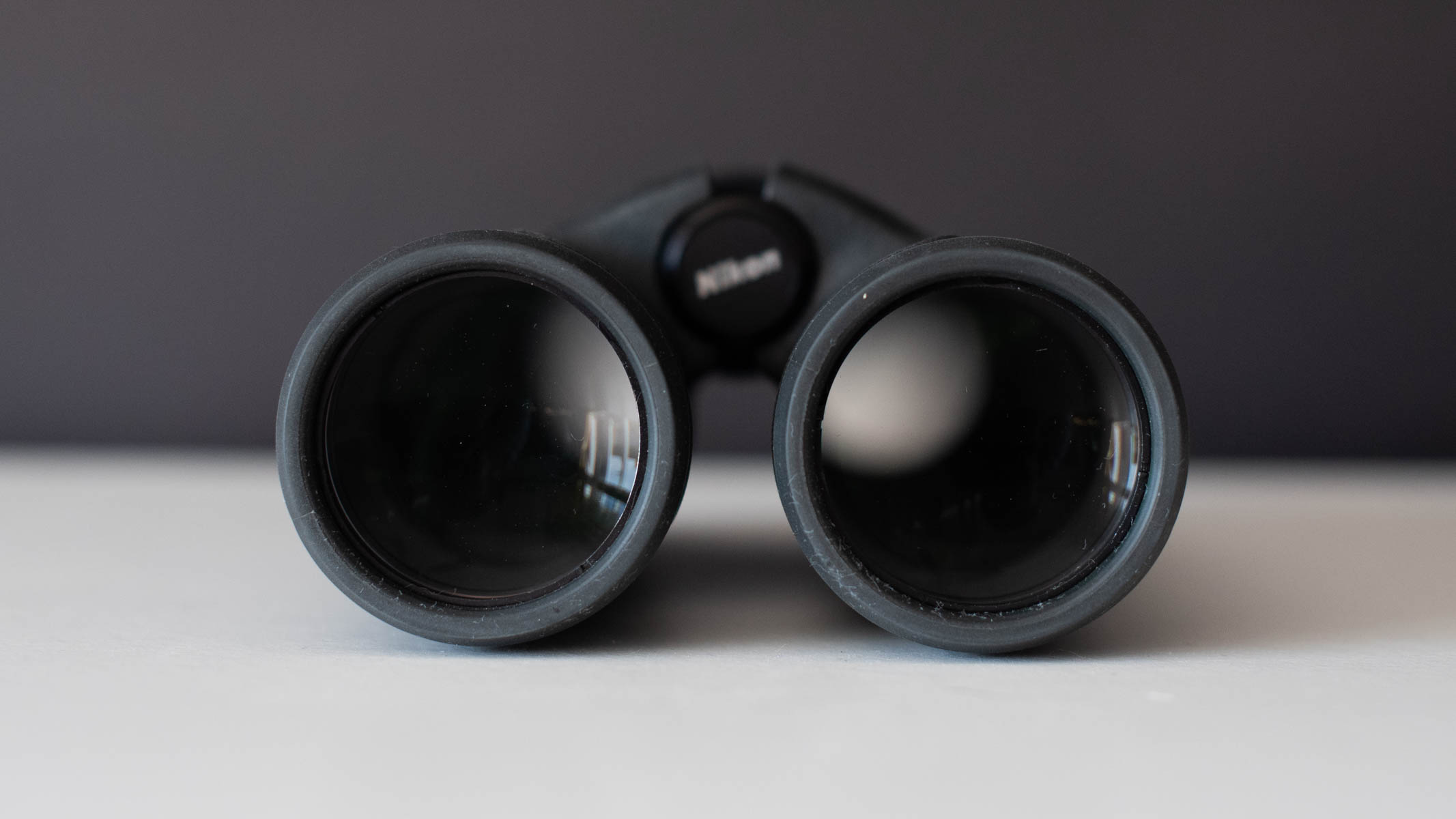
Nikon Prostaff P7 10x42 Alternatives
Direct competitors of the Prostaff P7 range come from the likes of Celestron with their Regal HD 10x42 ($350/£320) which features ED (extra-low dispersion) glass to minimize chromatic aberration and field-flattening glass to remove coma and other optical distortion associated with convex glass. And while the Regals are great binoculars with some impressive design features (BaK-4 glass, for instance) we somehow find ourselves more drawn to the Nikon Prostaff P7 10x42.
Of course, there will be some reading this that don't want to drop the best part of 250 big ones on a pair of binoculars. And to those we'd say, opt for the Nikon Prostaff P3 10x42. We gave them 4.5/5 stars in our review and loved their slim, sleek roof prism design and surprisingly good optical quality for their price point.
Jase Parnell-Brookes is an award-winning photographer, educator and writer based in the UK. They won the Gold Prize award in the Nikon Photo Contest 2018/19 and was named Digital Photographer of the Year in 2014. After completing their Masters Jase has spent a good chunk of two decades studying and working in photography and optics shooting and writing all over the world for big-name brands and media outlets. Now the Channel Editor for Cameras and Skywatching at Space.com their speciality is in low light optics and camera systems.
